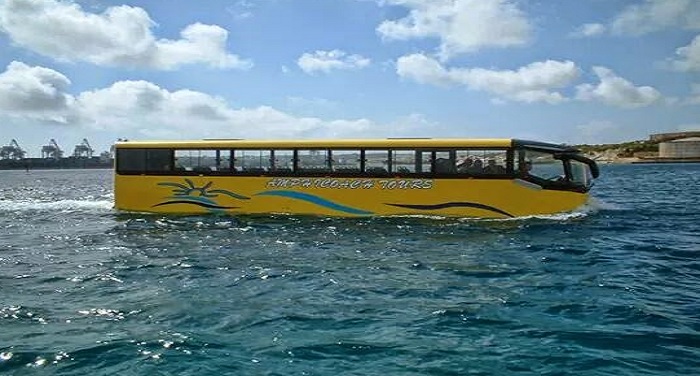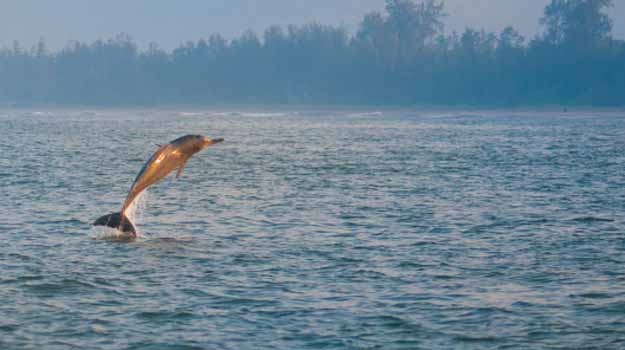

0


0
TRAVEL
By Geeta Yadav
17 April, 2017

 Spotting Exotic Species Of Birds
Yes! This time the bird watcher in her made her pester us to tour the Harike Wetland National Park in Punjab. Also known as Hari-Ke-Pattan, it is the biggest wetland in Northern India. A ride in the dual mode Amphibious Bus that slides through the waters as well as runs on the land to take the nature lovers around the Harike Wetlands excited her the most. It is well equipped with life jackets and can accommodate around 60 tourists including 10 children.
Spotting Exotic Species Of Birds
Yes! This time the bird watcher in her made her pester us to tour the Harike Wetland National Park in Punjab. Also known as Hari-Ke-Pattan, it is the biggest wetland in Northern India. A ride in the dual mode Amphibious Bus that slides through the waters as well as runs on the land to take the nature lovers around the Harike Wetlands excited her the most. It is well equipped with life jackets and can accommodate around 60 tourists including 10 children.
 The Dual Mode Bus That Excites Young And Old
The formation of Harike Wetland and the Harike Lake goes back to the year 1953 when the head works over the Sutlej River was constructed. Yes, you got it right. These wetlands are manmade. The Harike Lake is situated in the depth of the wetland. The wetland is popular not only in India but worldwide for its biodiversity.
On reaching the Harike Wetland one falls in love with nature. It was heartening to find that since 1987 conservation and public awareness programmes like afforestation of native tree species for habitat improvement, soil conservation and conservation of wildlife and fisheries, weed control, water quality monitoring, etc. have been initiated.
The Dual Mode Bus That Excites Young And Old
The formation of Harike Wetland and the Harike Lake goes back to the year 1953 when the head works over the Sutlej River was constructed. Yes, you got it right. These wetlands are manmade. The Harike Lake is situated in the depth of the wetland. The wetland is popular not only in India but worldwide for its biodiversity.
On reaching the Harike Wetland one falls in love with nature. It was heartening to find that since 1987 conservation and public awareness programmes like afforestation of native tree species for habitat improvement, soil conservation and conservation of wildlife and fisheries, weed control, water quality monitoring, etc. have been initiated.
 Home To Migratory Birds
Harike Wild Life Sanctuary is recognised throughout the world. It got this status in 1999. It is beautifully perched on the confluence of the river Beas and Sutlez at the Ferozepur and Amritsar border. It covers a heavenly area of approximately 86 sq km. A bird watcher is engulfed by the variety of bird sounds and at times just stands speechlessly to listen and admire the graciousness of nature as it welcomes thousands of migratory winged wonders during winter. You got it right. This sanctuary is home to birds that fly from both near and faraway lands such as Pakistan, Afghanistan, China, Siberia and the Arctic. It is home for a large number of resident and migratory birds.
The peak season of migration records more than 20,000 ducks that paddle around and quack to their heart’s content. The brahminy ducks, common teal, pintail, shoveller and wigeon are a common sight during the winter. The diving ducks such as the crested pochard, common pochard and tufted ducks adorn the lake and make it their home. More than 370 bird species out of which 40 species are migrants are also found here like the yellow-eyed pigeon, tufted duck, striated grass bird, sulphur- bellied warbler, white-browed fantail, yellow-legged gull, brown shrike, common wood shrike, white-tailed stonechat, and yellow-crowned woodpecker. Around 7 turtle-species and 26 species of fish also live here. The mammals at Harike include the wild boars, mongoose, jackals, Indian otter and above all the jungle cat.
The wetland has an amazingly rich variety of vegetation and also 26 species of fish such as Rohu, Catla, Mystus, Ranga to name a few. The crowning glory is the Indus dolphin which was spotted in the Beas River in Harike Wetland after 1930.
Home To Migratory Birds
Harike Wild Life Sanctuary is recognised throughout the world. It got this status in 1999. It is beautifully perched on the confluence of the river Beas and Sutlez at the Ferozepur and Amritsar border. It covers a heavenly area of approximately 86 sq km. A bird watcher is engulfed by the variety of bird sounds and at times just stands speechlessly to listen and admire the graciousness of nature as it welcomes thousands of migratory winged wonders during winter. You got it right. This sanctuary is home to birds that fly from both near and faraway lands such as Pakistan, Afghanistan, China, Siberia and the Arctic. It is home for a large number of resident and migratory birds.
The peak season of migration records more than 20,000 ducks that paddle around and quack to their heart’s content. The brahminy ducks, common teal, pintail, shoveller and wigeon are a common sight during the winter. The diving ducks such as the crested pochard, common pochard and tufted ducks adorn the lake and make it their home. More than 370 bird species out of which 40 species are migrants are also found here like the yellow-eyed pigeon, tufted duck, striated grass bird, sulphur- bellied warbler, white-browed fantail, yellow-legged gull, brown shrike, common wood shrike, white-tailed stonechat, and yellow-crowned woodpecker. Around 7 turtle-species and 26 species of fish also live here. The mammals at Harike include the wild boars, mongoose, jackals, Indian otter and above all the jungle cat.
The wetland has an amazingly rich variety of vegetation and also 26 species of fish such as Rohu, Catla, Mystus, Ranga to name a few. The crowning glory is the Indus dolphin which was spotted in the Beas River in Harike Wetland after 1930.
 The Crowning Glory Of India
The Government of India, Ministry of Environment and Forests and the Punjab State Government along with various NGOs and other agencies have shown commitment towards the conservation project since 1987-88. The Harike Wetland is being described as a model wetland for schools all over because it throws light on environmental challenges and also on it's importance as an ecosystem of international importance.
The Crowning Glory Of India
The Government of India, Ministry of Environment and Forests and the Punjab State Government along with various NGOs and other agencies have shown commitment towards the conservation project since 1987-88. The Harike Wetland is being described as a model wetland for schools all over because it throws light on environmental challenges and also on it's importance as an ecosystem of international importance.